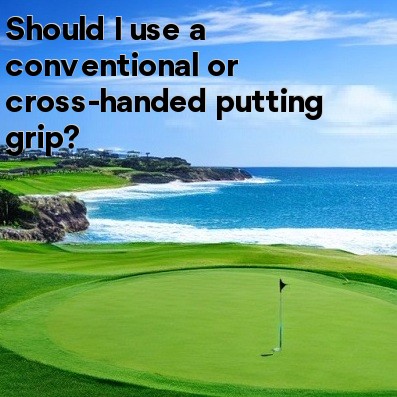
Should I use a conventional or cross-handed putting grip?
Golfers of all skill levels often find themselves debating over the type of putting grip they should use. The two most common options are the conventional grip and the cross-handed grip. Both have their advantages and disadvantages, and the choice ultimately depends on your personal preference and what works best for your game.
- Conventional Putting Grip:
The conventional putting grip is the traditional grip used by most golfers. With this grip, the lead hand (left hand for right-handed golfers) is placed on the top of the putter grip, while the trailing hand (right hand for right-handed golfers) is placed below it. The fingers of the lead hand grip the putter, while the trailing hand provides support and stability.
Advantages of the conventional putting grip include:
- It allows for a natural and comfortable hand position.
- It provides a good sense of control and feel over the putter.
- It enables a consistent and smooth stroke.
However, some golfers may find the conventional grip to be less stable and prone to inconsistencies in their putting stroke. If you struggle with keeping your hands steady or have difficulty with a consistent release, you may want to consider experimenting with a cross-handed grip.
- Cross-Handed Putting Grip:
The cross-handed putting grip, also known as the left-hand low grip, is an alternative method where the hands are positioned opposite to the conventional grip. With this grip, the lead hand (right hand for right-handed golfers) is placed below the trailing hand (left hand for right-handed golfers).
The cross-handed grip has gained popularity among golfers, especially those who struggle with inconsistent putting strokes. Some advantages of the cross-handed grip include:
- It promotes better stability and prevents excessive hand motion during the stroke.
- It reduces the risk of the putter face opening or closing during impact.
- It helps in creating a pendulum-like motion, leading to improved distance control.
However, the cross-handed grip may feel unnatural and awkward at first, requiring an adjustment period to get used to the new hand positioning. It may also affect your ability to have a firm grip on the putter, potentially leading to less control over the stroke's speed and direction.
Ultimately, the choice between a conventional or cross-handed putting grip depends on your personal comfort and what brings you the most consistent results on the green. It's essential to experiment with both grips and give each a fair chance before deciding which one suits you best.
Consider seeking advice from a golf instructor or coach who can analyze your putting stroke and provide guidance on the most suitable putting grip for you. Remember that putting is a highly individualized aspect of the game, and what works for one player may not work for another.
In conclusion, there is no right or wrong answer when it comes to choosing between a conventional or cross-handed putting grip. Both methods have their merits, so it's a matter of personal preference and what helps you perform at your best on the green. Practice and experimentation will allow you to discover which grip feels most comfortable and produces the desired results for your putting game.





